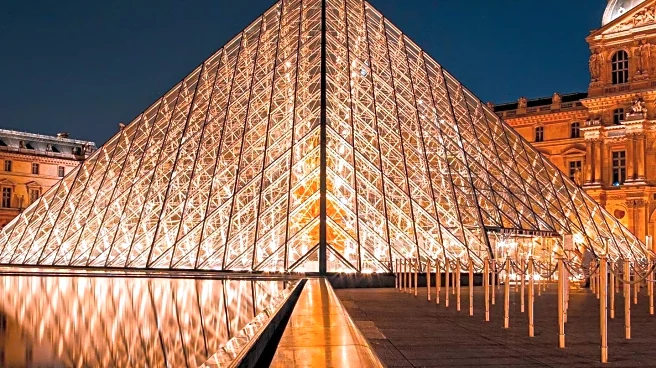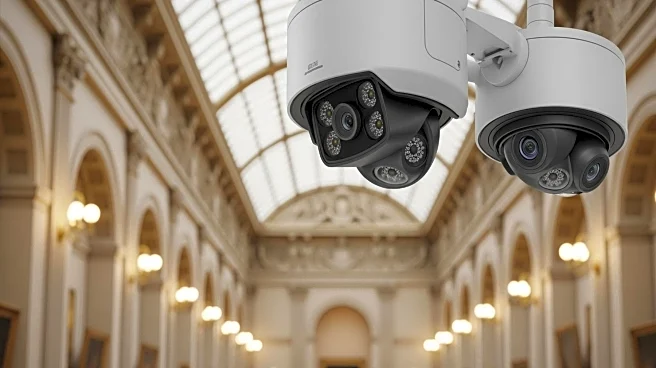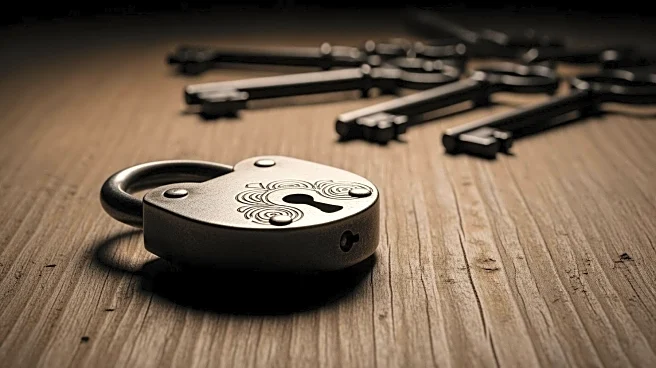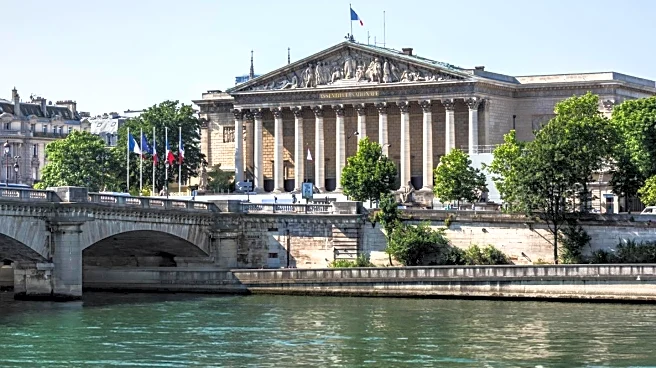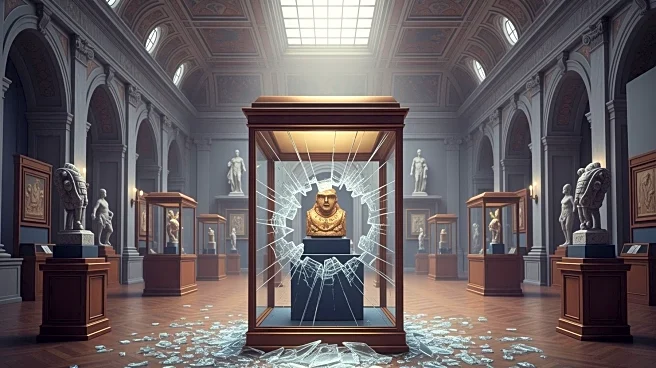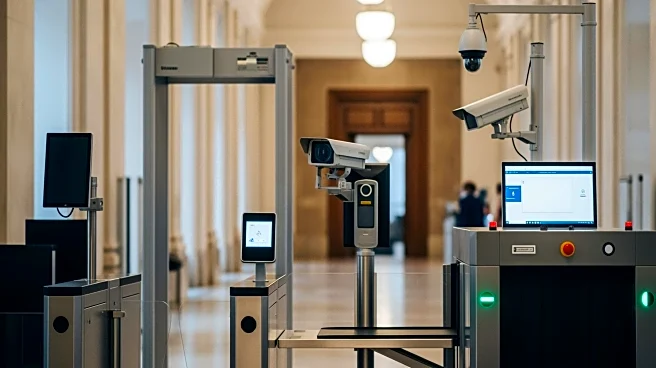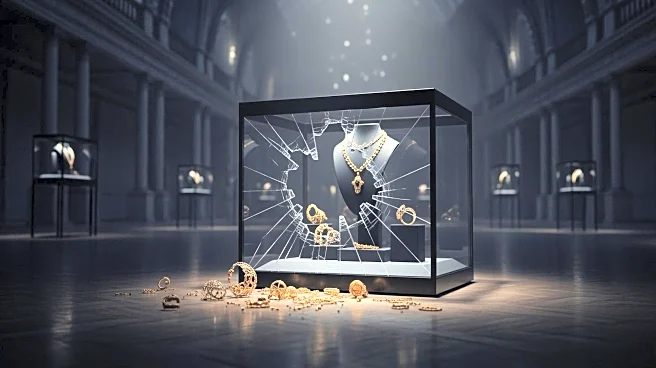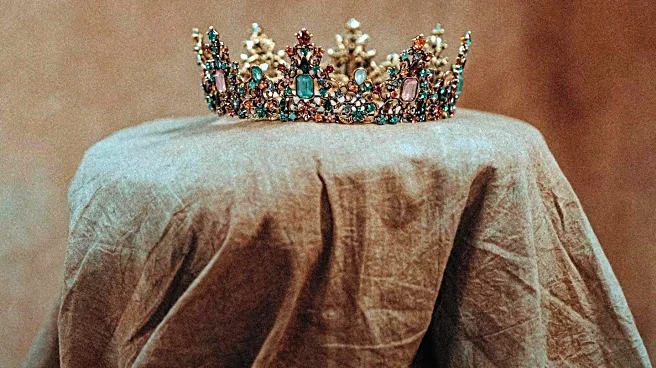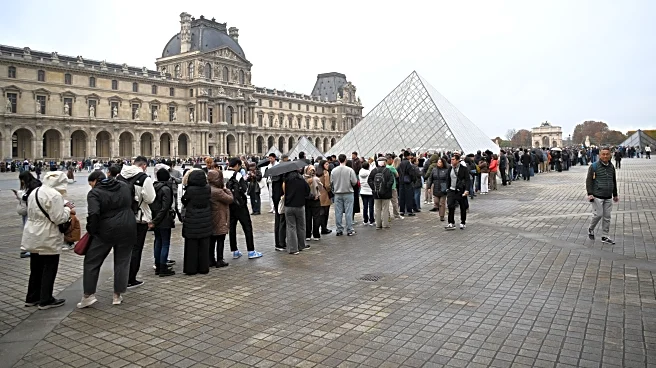What's Happening?
A recent robbery at the Louvre Museum in Paris has captured global attention, highlighting vulnerabilities in museum security worldwide. Thieves stole France's famous crown jewels, including an emerald
necklace and earrings from Empress Marie-Louise's collection. This incident follows a series of high-profile museum thefts, including a break-in at Paris' Natural History Museum in September 2025, where gold samples worth $700,000 were stolen. The Louvre heist has prompted a security review at the museum and other cultural sites, recalling past thefts such as the 1911 disappearance of the Mona Lisa. The stolen artworks, including pieces by Rembrandt and Vermeer, are valued at half a billion dollars, leaving empty frames as a reminder of the loss.
Why It's Important?
The Louvre heist underscores the ongoing challenges museums face in safeguarding priceless artifacts. With cultural institutions housing valuable collections, the theft raises concerns about security measures and the potential for similar incidents globally. Museums like the Smithsonian National Museum of Natural History and the Fabergé Museum in Russia hold significant collections that could be targeted. The theft impacts the art world, potentially increasing insurance costs and prompting museums to invest in enhanced security systems. The incident also highlights the cultural loss when historical artifacts are stolen, affecting public access to heritage and art.
What's Next?
In response to the Louvre heist, museums worldwide may reassess their security protocols to prevent future thefts. Cultural institutions could collaborate on best practices for safeguarding collections, potentially leading to technological advancements in security systems. Law enforcement agencies might increase efforts to recover stolen artifacts and prosecute those responsible. The art community may advocate for stricter regulations and international cooperation to protect cultural heritage. As investigations continue, museums may face pressure to balance public access with security needs, ensuring the preservation of art for future generations.
Beyond the Headlines
The Louvre heist raises ethical questions about the protection of cultural heritage and the responsibility of museums to secure their collections. It highlights the tension between accessibility and security, as museums strive to offer public access while safeguarding artifacts. The incident may prompt discussions on the role of technology in enhancing security, such as surveillance systems and digital tracking of artworks. Additionally, the theft could influence cultural policies, encouraging governments to prioritize funding for museum security and international cooperation in recovering stolen art.
